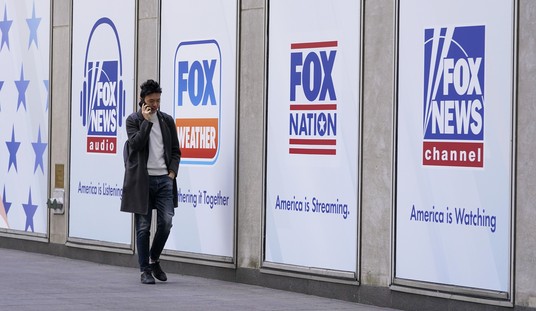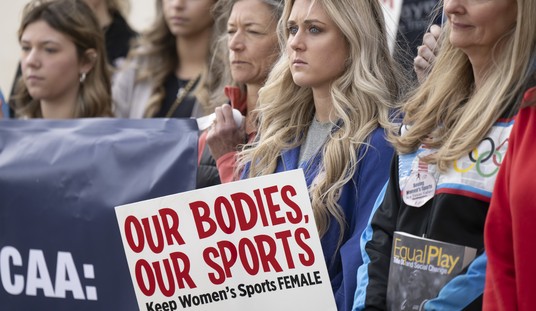Democrats and their progressive allies claim to be champions of both the working poor and the environment. But that is impossible because the Big Green agenda isn’t compatible with the needs of the least among us.
Current state and national energy policy is simply cruel. It reflects an emotionally and financially abusive relationship where the left tells those at the lowest end of socioeconomic spectrum that “we are the only ones who love you” while favoring wealthy environmentalists, crony capitalists, and crony philanthropists at the expense of the impoverished.
The infamous Department of Energy loan program has provided nearly $36 billion in taxpayer guaranteed loans for the purpose of mitigating “the financing risks associated with building out commercial-scale clean energy projects” for some of the world’s wealthiest corporations including Goldman Sachs, Ford, and Nissan.
Let’s face it; the Big Green industry has a lot more money to donate to political campaigns than the poor. The relationship between political donations on the left and taxpayer subsidized loans to wealthy Big Green investors such as Pat Stryker (Abound Solar) and George Kaiser (Solyndra) has been well documented.
Add in renewable energy mandates and ask what do taxpayers and electricity consumers get for their “investment” in the Big Green agenda? While wealthy Big Green investors get richer, the rest of us get more debt, failing companies, and higher energy costs, which certainly doesn’t help the unemployed or the working poor.
Poverty rates rising
Several weeks ago the U.S. Census Bureau released data showing an additional 2.6 million Americans fell below the poverty line last year, forcing up the poverty rate from 14.3 percent in 2009 to 15.1 percent in 2010.
Recommended
Currently, more than 46 million Americans live below the government-defined poverty line of $22,314 in income per year for a family of four and $11,139 for an individual.
CNN Money quoted Paul Osterman, author of "Good Jobs America," and a labor economist at MIT, “The results are not surprising given the economy. You would expect with so many people unemployed, the poverty rate would go up. It's just another sign of what a difficult time this is for so many people.”
A recent study from the liberal Colorado Fiscal Policy Institute titled “The State of Working Colorado” sounded the alarm bells reporting that from 2000 to 2009 “experienced the fasted growth in child poverty in the country…nearly on in five kids in Colorado are in poor families, and more than one-third live in families with incomes of less than twice the Federal Poverty Level.”
In addition, Colorado, home of the New Energy Economy and an aggressive renewable energy mandate, now has 40,000 fewer jobs than in 2000 with 900,000 more residents, the highest rates of unemployment in 28 years, and the median salary remains at the same level it was in 2000. The wage gap is considerable between black and Hispanic households, which make $20,000 less than the state’s median household income of $54,000.
The Big Green agenda obviously hasn’t helped job creation in Colorado.
Set aside for a moment arguments about whether or not the “war on poverty” is an effective way to help the poor and consider this: Why advance energy policy that makes it more difficult for Americans to make ends meet?
The Cost of Renewable Portfolio Standards
As Michael Sandoval and I reported last week on these pages, 24 states and the District of Columbia have Renewable Portfolios Standards (RPS) that mandate a percentage of electric power come from “renewable” sources such as wind and solar by a certain date. Maine claims the highest standard at 40 percent followed closely by California at 33 percent and Colorado at 30 percent.
Despite the claims of green advocates, Renewable Portfolio Standards are costly to consumers, taxpayers, and the economy. Taxpayer subsidies to uber-rich corporations such as Goldman Sachs and billionaire investors such as Pat Stryker are one thing, but most devastating is what they do to energy costs and the economy.
A study from the American Tradition Institute (ATI), which is legally challenging Colorado’s RPS, found that the RPS costs to both the economy and consumers are enormous. Using economic modeling, ATI estimated a low, average, and high cost for the state’s RPS and found:
-
From 2011 to 2020, the RPS “will cost Colorado citizens an additional $11.78 billion over conventional power.”
-
By 2020, the RPS will force working families to an average of $337 more per year.
-
By 2020, the RPS will cost commercial businesses an average of $2,360 per year.
-
By 2020, the RPS will cost industrial businesses an average of $43,367 per year.
And the increased energy prices will have a huge impact on the economy.
-
By 2020 “Colorado will lose an average of 18,380 jobs.”
-
Wages will be reduced by an average of $1,269 per worker.
-
Total “annual real disposable income will fall by $1.87 billion.
(Full disclosure: I am a media fellow with American Tradition Institute)
Jobs will be harder to find, wages will decline, and the cost of energy will go up. The cost for goods and services that use electricity for production (just about everything) will also increase. The result, Coloradans will have less money to spend on everything from groceries to child care to school supplies. Those on the lowest end of the socioeconomic spectrum, including minorities and female-headed households, will feel this most acutely.
Colorado is just one of 24 states and the District of Columbia that have an RPS. ATI has done cost studies on other states as well including Montana, New Mexico, and Delaware. Depending on the level of RPS, your state could fare better or worse.
Make no mistake; the Big Green lobby would love nothing more than a national renewable energy standard. The New York Times reported in February 2009, that after getting the “stimulus package of their dreams, packed with tax credits and grants and loan programs intended to restart their industry,” environmentalists were turning their attention to a national RPS of 25 percent by 2025.
According to the Big Green lobby, “in spite of the new tax credits, some renewable sources, especially solar, still cost more than conventional sources of electricity like coal or natural gas. So a mandate to build more solar arrays and wind farms in theory would speed things along.”
So they acknowledge that even with all the taxpayer subsidies, renewables are still too expensive. Why should wealthy environmentalists care about the working poor? If it only saved one Arapahoe snowfly, wouldn’t it be worth it?
Big Philanthropy versus working poor
The Renewable Portfolio Standard is crucial to the Big Green agenda, which blames man made global warming for destroying the planet. The only way to save it is to rid the world of fossil fuels and replace them with renewables, thereby reducing the amount of carbon emissions.
Global warming alarmists have employed animated images of polar bears drowning and fake “hockey stick” graphs to advance their pet energy sources such as solar and wind, which are neither green nor clean, but that’s not important.
The poster child for wealthy environmentalists is the non-profit World Wildlife Fund (WWF) and it’s cute panda bear logo. The global warming alarmist behemoth boasts operating funds of $224.2 million, a 1.3 percent increase over the prior year. WWF spent $300,000 in 2009 lobbying Congress to address global warming and support renewable energy according to Open Secrets.
WWF pays it’s top 15 employees $3,652,220 in total compensation; that’s an average of $243,481, more than ten times the U.S. poverty level for a family of four.
Global warming critic Christopher Booker exposed WWF’s real agenda (hint: not necessarily the environment) in a March 2010 column. Regarding a program to preserve the Amazon rain forest, Booker wrote:
“[A] hidden agenda of the scheme to preserve this chunk of the forest was to allow the WWF and its partners to share the selling of carbon credits worth $60 billion, to enable firms in the industrial world to carry on emitting CO2 just as before, more than a few eyebrows might be raised. The idea is that credits representing the CO2 locked into this particular area of jungle – so remote that it is not under any threat – should be sold on the international market, allowing thousands of companies in the developed world to buy their way out of having to restrict their carbon emissions. The net effect would simply be to make the WWF and its partners much richer while making no contribution to lowering overall CO2 emissions.”
Conclusion
The relationship between the left and the Big Green lobby has served both very well, as the money has flowed freely between them.
But how does the left successfully lays claim to champion of the downtrodden at the same time? The Big Green agenda energy policy enriches the wealthiest non-profits, investors, and corporations at the expense of taxpayers, consumers, and those at the lowest end of the socioeconomic spectrum.
The obvious hypocrisy leaves me wondering why the working poor, minorities, or female head of households would ever cast a vote for such a cruel policy that perpetuates their own economic challenges.
When the abusive relationship is exposed, we can’t even get an apology from Energy Secretary Steven Chu.
Amy Oliver Cooke is the founder of Mothers Against Debt (www. Mothersagainstdebt.com). She is also the director of the Colorado Transparency Project for the Independence Institute and writes on energy policy. She can be reached at amy@i2i.org.

























Join the conversation as a VIP Member